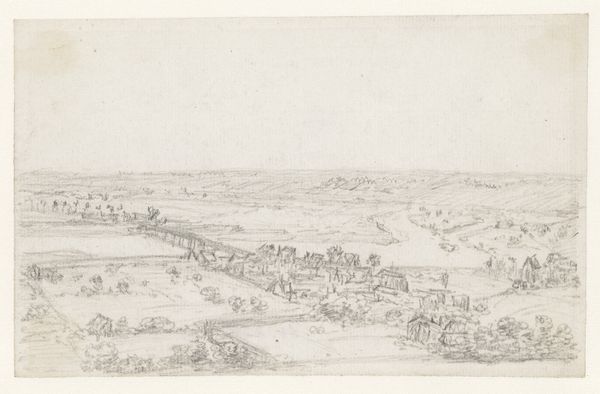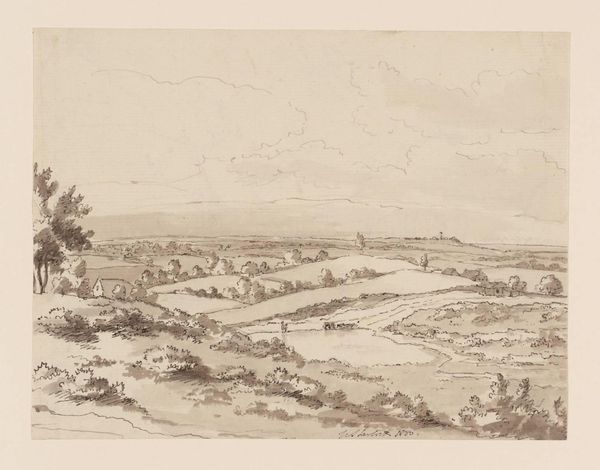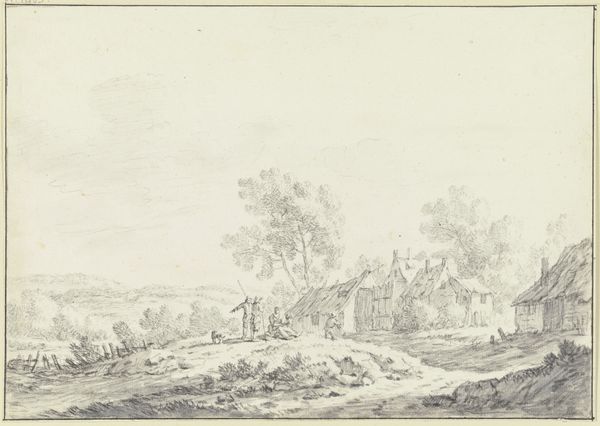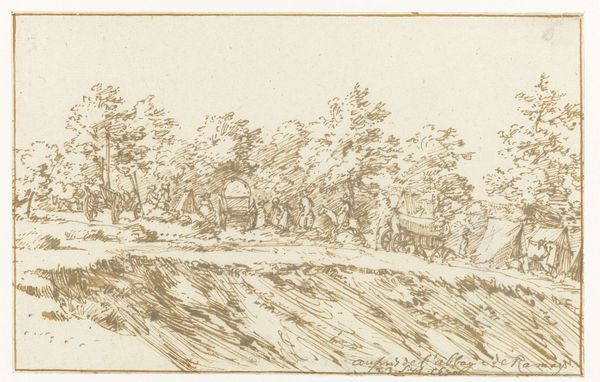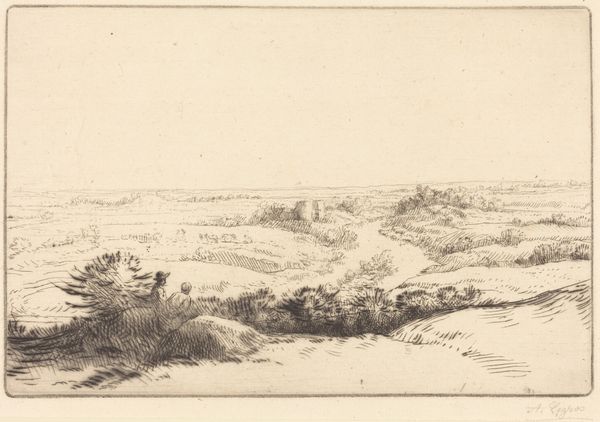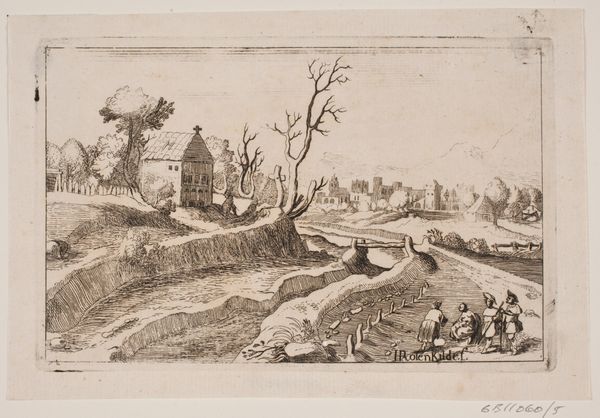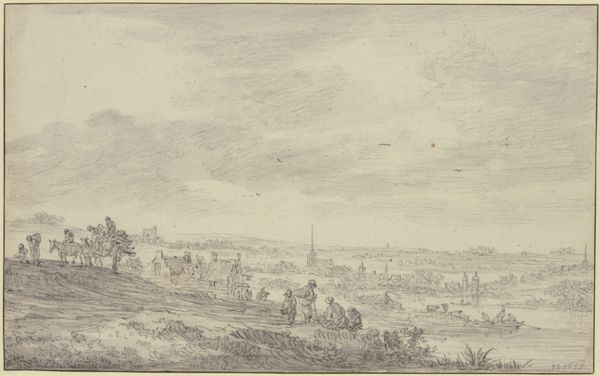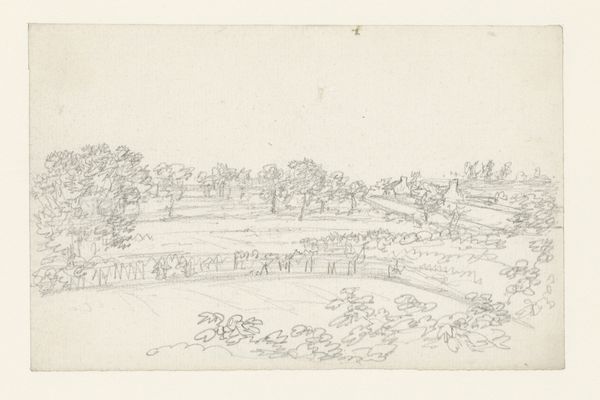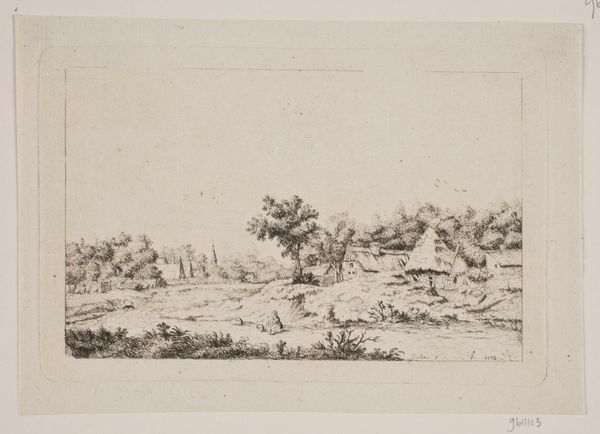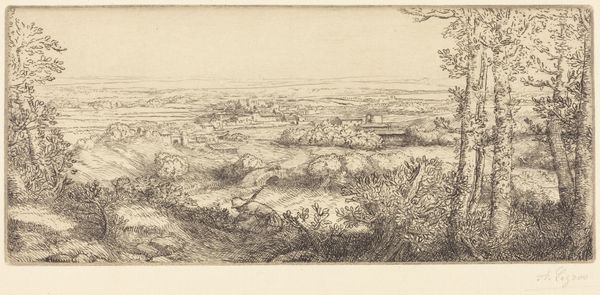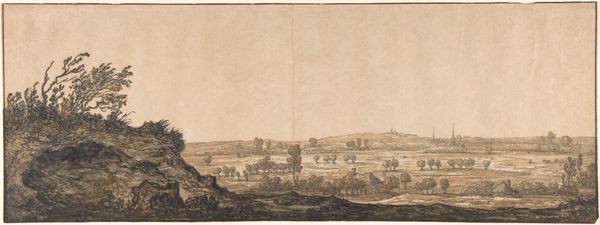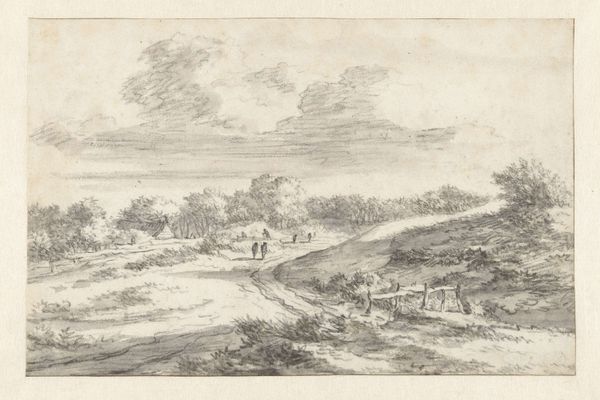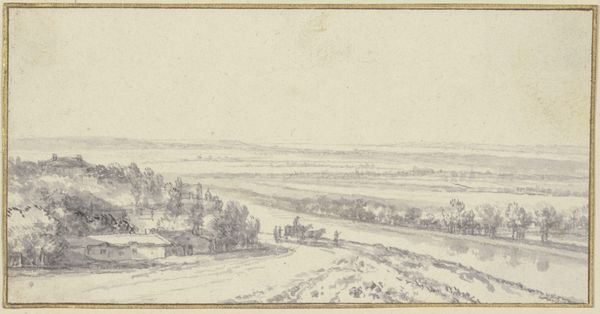
drawing, ink
#
drawing
#
baroque
#
dutch-golden-age
#
landscape
#
ink
#
cityscape
Dimensions: height 170 mm, width 344 mm
Copyright: Rijks Museum: Open Domain
Curator: This drawing is catalogued as "View of Bonn," possibly from 1673, by Constantijn Huygens II. It’s executed in ink, typical of the Dutch Golden Age’s landscape drawings. Editor: It’s striking how serene and balanced it feels, despite being a simple ink drawing. The layers recede beautifully into the distance. It's more than just a landscape; it hints at something deeper. Curator: Huygens was deeply embedded in the political circles of his time, serving as secretary to multiple Princes of Orange. His travels throughout the Dutch Republic and beyond were often intertwined with the exercise of political power, and his art reflects those roles. A panoramic view like this served not only as topographical documentation, but also emphasized his position over this urbanized land. Editor: Exactly! The viewer’s elevated perspective is vital here. The steeple of Bonn dominates the horizon, which traditionally symbolize the power of spiritual or temporal authority. It emphasizes how religious architecture becomes shorthand for municipal identity and values. Look at the figures and animals to the left of the painting, grouped in front of an establishment: ordinary lives seem to be overshadowed by the sheer dominance of Bonn itself. It's not just a landscape; it's a statement of hierarchy and power. Curator: The landscape in this way really acts as a witness to that hierarchy and power. Think of those tiny figures in the foreground – are they truly insignificant, or does their presence somehow authorize Huygens' perspective, confirming him as some objective, even neutral, surveyor? The symbolism is open to many readings. Editor: Yes, and let’s consider what "Bonn" itself represented culturally. As a city within the Holy Roman Empire, its Catholic identity would’ve contrasted with the Dutch Republic’s Protestantism. This drawing can then be considered within an ongoing narrative of political, ideological, and religious negotiations of 17th century Europe. Curator: Ultimately, that blending of personal perspective and broader cultural context provides so much depth, revealing a narrative far beyond a simple city view. Editor: Indeed. It is always fascinating to view artworks with a historical lens to better appreciate their place in our shared narrative.
Comments
No comments
Be the first to comment and join the conversation on the ultimate creative platform.
